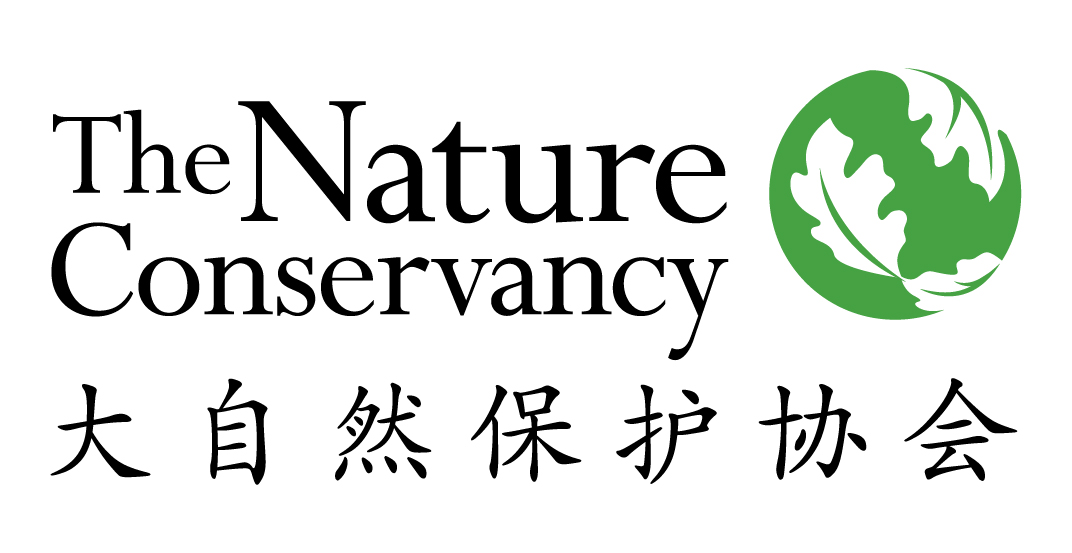 2015-10-18
2015-10-18
 5704
5704跨界:寨生——花旗贵州手工业发展项目展览
北京2015年
Cross-Boundary: Born in Villages
CitiGuizhou Handcraft Development Program Exhibition
Beijing, 2015
展览主题
跨界:
寨生——花旗贵州手工业发展项目2015年北京展览
Topic:
Cross-Boundary: Born in Villages— Citi-Guizhou Handcraft Development Program Exhibition
Beijing, 2015
展览地点
北京市西城区丁章胡同3号 金融客咖啡
Location:
Jinrongke Café (No.3 Dingzhang Hutong, Xicheng District,Beijing)
展览时间
2015年10月20日至27日
Dates:
October 20–27, 2015
开幕式时间(仅限邀请嘉宾)
2015年10月20日下午2:00
Opening Ceremony:
2:00 pm October 20, 2015
活动组成
Exhibition Content
1.跨界:寨生---花旗贵州手工业发展项目2015年北京展览开幕式(仅限邀请嘉宾)
Opening Ceremony
2.花旗贵州手工业发展项目回顾展
5-Year Program Retrospective Exhibition
3.《寨生:手上的记忆》新书发布式
Born in Villages: Memory on Hands Book Release
4.蓝花叙事:传统与当代的互生
Blue Flower Narrating: Synergies Between Tradition and Modernity Exhibition
5.再一起:手工与当代艺术的叙话
“Together: Dialogue Between Traditional Handcrafts and Contemporary Art” Exhibition
6.苗疆故事:手工与国际时尚的对话
“Miao Story: Dialogue Between Traditional Handcrafts and International Fashion” Exhibition
跨界·寨生:花旗贵州手工业发展项目
2015年北京展览活动组委会
Team of Cross-Boundary: Born in Villages— Citi-Guizhou Handcraft Development Program Exhibition Beijing,2015
总协调:
任晓冬
Chief Coordinator:
Xiaodong Ren
总策划:
王小梅
Chief Planner:
Xiaomei Wang
学术指导:
顾久
Academic Advisor:
Jiu Gu
策展人:
赵怡 赵峰
Chief Curators:
Yi Zhao, Feng Zhao
策展助理:
李玮 贾飞 Sarah Horowitz
Curatorial Assistants:
Wei Li, Fei Jia, Sarah Horowitz
新媒体推广:
赵相康
New Media : Xiangkang Zhao
顾问:
杨庆武 杨大勇 宋海宇 曾丽 高嵩 周子鸿 陈思岷 尤雁子 吴晓秋 杨永红 王燕达 唐燕
Consultants:Qingwu Yang, Yang Dayong,Song Haiyu, Li Zeng,Gao Song, Zhou Zihong, Chen Simin, Yanzi You, Xiaoqiu Wu, Yonghong Yang,Yanda Wang, Yan Tang,
支持单位:
花旗集团基金会
Supporting Organization:
Citi Foundation
主办单位:
Hosting Organizations:
贵州师范大学自然保护与社区发展研究中心
Community-Based Conservation and Development Center, Guizhou Normal University
贵州省人类学学会
The Anthropology Society of Guizhou
贵州日报《小梅访谈》栏目
“Xiaomei’s Interview” of Guizhou Daily
承办:
Hosting Venue:
金融客咖啡
Jingrongke Café
若水合投
Zen Water Capital
协办单位:
Co-organizers:
雁巢收藏
Yanchao Gallery
《博鳌观察》杂志
Bo Ao Observer Magazine
苗疆故事民族服饰博物馆
Guizhou Ethnic and Folk-custom Museum
“绝对贵州”创意设计联盟
Absolute Guizhou Design Alliance
贵州教育出版社
Guizhou Educational Press
贵州盛华职业学院文化传承中心
Cultural Inheritance Center at the Guizhou Forerunner College
野鹿盖有机茶叶发展有限公司
Yelugai Organic Tea Development Limited Company
武汉诸阁文化传播有限公司
Wuhan Zhuge Cultural Communications Co. Ltd.
贵州观复文化传播有限公司
Guizhou Guanfu Culutral Communication Co.Ltd.
贵州未名堂设计有限公司
Guizhou Weimingtang Graphic Design Co.Ltd.
主题阐释
Overview
寨生,意指寨子里生发出来的祖先记忆和文化视像。寨子在中国的原始聚落中为最小单元,贵州寨子如一个小小区隔,在大山之间一方偏僻之处十几户到上百户人家,多民族聚集生活,与自然和谐共生,农耕劳作生长出祖先崇拜的圣神仪式,精微繁复的手工是手工者对神灵和祖先的敬畏,是自己和灵界对话的媒介,是看待世界的纯粹审美和公正对待世界的原初表达。
“Born in Villages” (寨生,zhài shēng) refers to the ancestral memories and cultural imagery of village life. Zhài zi (寨子) are the original and smallest unit of settlement in China. Zhài ziin Guizhou province are inhabited by 40-plus different ethnic minority groups, living in communities of several dozen to a hundred or more households.
贵州多民族手工艺存留的符形直接承接上古时期的文明,对探寻中国文明之源具有重要价值。一直被广泛视为贵州民间艺术不仅仅是民间艺术,而是上古新石器时代部族、方国的遗留,相当于国家这一级意义的遗产。一代代的民族迁徙史和保守性神灵文化使其得以传承,或者是祖先崇拜的需要以及族群定义的神学意义,使其在固执的仪式场域和生活场景得以传习,代代相传上万年。而贵州多民族手工艺所承载的文明起源的重要性,如果不被认知她对上古文明起源的伟大贡献,我们将永远不能认识到它的重要价值和意义。
For many zhài zi inhabitants, farming is not only a means of sustenance— it is a way of honoring their ancestors. Making handcrafts is not only a hobby—it is a ritual act, and a communication medium between living and spiritual worlds. Spiritual and material sustenance are inextricable from one another in the zhài zi.
贵州多民族文化具有后现代主义审美的价值取向,民族手工保留上古文明的珍贵符型,留存的手工艺不仅属于中国,也是这块土地留给世界最宝贵的贡献。贵州的多民族文化不仅仅在中国是突出的文化多样性表达,在人类文明史的工艺美术史中含有非常重要的份额。我们相信,集聚具有文化使命感和创意精神的一群人,在一起带着对贵州多元文化价值的认知和认同,参与多学科多族群互动交融,城市和乡村交流互生,将引领手工记忆新的生命力,新的中国流行文化将生长起来,让手作之美为传统价值的媒介向世界表达中国,并代表中国的传统价值观和中国文化与世界交流和对话。
The symbols and patterns of Guizhou ethnic handcrafts record traditions that have been passed down for over 10,000 years. Today, we honor this rich cultural legacy by celebrating the contributions of these crafts and their craftmakers in the contemporary context.
我们认为,建立城市和乡村互动和交流的平台,让城市更多参与到本土乡土文化的认知和实践中来,城市支持乡村手工艺者共同参与协助进入市场,实现以市场为导向的经济发展、文化传承和环境保护。一直以来,我们以艺术的眼光来审视民族手工艺,以乡村艺术家的身份来看待手工者和传承者,认为不断在城市的展览交流活动中,能增强乡村艺术家自身的能力,在多元文化在互动中再生,能让更多的人认知到贵州多民族手工艺的历史价值与当代叙事同等重要。
As the pieces in this show demonstrate, the aesthetic appeal of Guizhou ethnic handcrafts has lasted the test of time. We believe that leveraging market demand for these handcrafts has significant potential to improve the livelihoods of ethnic minority craftmakers. The Citi-Guizhou Handcraft Development Project has spent the past five years coordinating with village artists, academics, government institutions, and creative enterprises to develop a market-oriented rural development model that is culturally sensitive, economically sustainable, and environmentally sound. This is a task that can only be achieved though “crossing boundaries”— between disciplines, geographies, and cultures.
展览背景
Exhibition Background
至2015年,花旗集团基金会持续支持花旗贵州手工业发展项目已五年。五年间,我们按照项目目标严格执行完成各项活动,大力传播和传扬贵州多民族文化的价值和建构以文化为基础的发展。在省内认知度和国外交流上,均取得丰硕的成果。花旗贵州手工业发展项目在贵州省成为引领文化传承、经济发展和环境保护的公益性文化领航项目,得到贵州省委宣传部、贵阳市委宣传部、贵州省出版集团、贵州省新闻出版局、贵州省非物质文化遗产保护中心的重视,开始生长为贵州推动民族手工艺传承和发展的一个核心项目。
The Citi-Guizhou Handcraft Development Project has received financial support from the Citi Foundation for the past five years. Since 2010, the program has implemented a number of activities to promote Guizhou minority culture and culture-based rural development initiatives. As the forerunner of cultural inheritance, economic development, and environmental protection public interest groups in Guizhou province, the program has received local and international recognition, and garnered support from city and provincial level publicity departments, Guizhou Publishing Group, Guizhou News Publishing Bureau, and the Guizhou Intangible Cultural Heritage Center.
花旗贵州手工业发展项目注重展览和推广活动,建立城市和乡村互动和交流的平台,让城市更多参与到本土乡土文化的认知和实践中来,城市支持乡村手工艺者共同参与协助进入市场,实现以市场为导向的经济发展、文化传承和环境保护。我们以艺术的眼光来审视民族手工艺,以乡村艺术家的身份来看待手工者和传承者,认为不断在城市的展览活动中,能增强乡村艺术家自身的能力,能让更多的城市人群认知到贵州多民族手工艺的历史价值和当代叙事同等重要。
The Citi-Guizhou Handcraft Development Program utilizes public events, news and social media, and exhibitions as way of “crossing boundaries” between city and village. Offering urbanites the opportunity to learn about village-based ethnic minority groups helps foster cultural understanding and consumer interest, paving pathways for market-based approaches to cultural inheritance protection, economic development, and environmental protection. We believe that the promotion of village handcrafts in urban settings is a way of celebrating the historic and contemporary value of Guizhou minority handcrafts. These public events affirm the artisans’ cultural identity and validates their craftsmanship.
本着这样的基本价值认同,我们在项目几年时间,先后在贵阳成功举办三次展览活动,包括“搁浅在时光村落里的蓝花:花旗贵州手工业发展项目‘百个苗族家庭的故事’慈善义卖活动”、跨界(一)·贵州公益艺术沙龙”、《蓝花叙事》新书发布暨部分藏品展、跨界(二)·民艺风物展/尘仪式等展览活动。
Having identified public events as a key program strategy, The Citi-Guizhou Handcraft Development Project has already held four exhibitions in Guiyang, the provincial capital of Guizhou— Blue Flowers in Time: The Stories of 100 Miao Families Charity Sale (2010); Cross-Boundary I: Guizhou Public-Interest Art Salon (2012); Blue Flower Narrating Book Release and Exhibition (2013); and Cross-Boundary II: Folk Craft Exhibition (2014).
今年在北京的展览是花旗贵州手工业发展项目在2015年项目期的计划,将全面呈现花旗贵州手工业发展项目五年的项目成果,回顾展里将全面展现项目出版、基础性研究、设计、印刷的资料和作品。项目支持的三个县、十几个村寨的手工艺发展协会的蜡染、刺绣、织锦、手工纸的老物件和新产品数百件将参与展览。项目还邀请10几位青年艺术家用贞丰手工纸作画,以“再一起”呈现传统和当代的互动与“再生”。除此而外,项目衍生的贵州省首个文化公益品牌“蓝花叙事”和蓝花基金展示及长期的合作伙伴苗疆故事品牌和贵州盛华职业学院文化传承中心的作品,将彼此融入并相对独立地参与到展览中来。
The 2015 exhibition in Beijing is a retrospective of our work over the past five years. It includes research findings, publications, and handcrafts. Batik, embroidery, and hand-made paper products from the 11 handcraft cooperatives supported by the Citi-Guizhou Handcraft Development Project are for sale. In addition, 12 contemporary artists from Beijing and Guiyang have been invited to paint on and sculpt with handmade paper, exploring the interaction between traditional and modern art forms. The exhibition also showcases items produced under the Blue Flower Stories brand, Guizhou’s first minority handcraft brand based on fair trade principles and practices, as well as work from our long-time collaborators at the Minority Culture Heritage Center at Guizhou Forerunner College.
“花旗贵州手工业发展项目”始于2010年,旨在通过帮助贫困少数民族手工艺家庭作坊提高传统手工艺产品的生产和营销技巧,从而提高收入水平,传承并发展民族文化,保护和利用当地的自然资源与环境。该项目由花旗集团基金会资助,希望通过企业、民间组织、政府部门多方合作,积极探索少数民族地区文化传承、经济发展和环境保护三重目标有机结合的可持续发展模式。
The Citi-Guizhou Handcraft Development Project began in 2010 as a an action-research initiative to help improve the production and marketing capacities of minority craftmakers as a means of increasing their incomes, promoting cultural heritage protection, and sustainably managing local resources. The project received funding from the Citi Foundation, which offers grants to organizations working at the intersections of enterprise, civic groups, and government to build cultural, economic, and environmental sustainability in impoverished areas around the globe.
贵州省丹寨县、雷山县、贞丰县是中国最为贫困的县之一,村寨的村民人均年收入低于1,196元。自2010年开始,由花旗集团基金会资助,贵州师范大学自然保护与社区发展研究中心和《贵州日报》“小梅访谈”栏目共同实施,在丹寨县11个苗族村实施扶贫项目。五年来,围绕蜡染、古法造纸、织锦、百鸟衣、锦鸡刺绣、米酒酿造等民族传统工艺,支持、建立了11个少数民族手工合作社,实施了大量生产技能和合作社能力培训,直接培养少数民族手工艺者近500人,提高了手工艺品的生产制作水平,并在不损害自然环境的前提下提高了产量和质量;通过建立合作社产品销售点和在线销售,帮助手工业者与市场对接,增强手工艺者的谈判能力和定价话语权,并推动产品研发和销售。该项目的成功实施使6000户贫困少数民族家庭(近20000人)平均年增收达30-40%以上。在过去五年,贵州花旗手工业发展项目开展了以下的活动:
Danzhai, Leishan, and Zhenfeng counties in Guizhou are three of the poorest counties in China. The average annual per-capita income in these areas is less than 1,200 RMB. With Citi Foundation’s support, the Community-Based Conservation and Development Center of Guizhou Normal University and Xiaomei’s Interview of Guizhou Daily established and supported 11 handcraft cooperatives across these three counties. These cooperatives produce batik, hand-made paper, textiles, embroidery, and rice wine. The program has already conducted capacity-building workshops for over 500 minority craftspeople, helping them build their production techniques and marketing capacity. Nearly 6,000 households (around 20,000 people) have benefitted from this project, with an increased average income of 30-40%. During the past five years, Citi-Guizhou Handcraft Development Project has:
支持、建立了11个少数民族手工合作社,通过出国访问,专家授课、参观,同伴技能等方式促进她们综合能力的提升;
Established and supported 11 minority handcraft cooperatives, and improved their production capabilities via specialist training, apprenticeship pairings, and research visits to other handcraft programs domestically and abroad.
传授等能力建设活动,直接培养少数民族骨干(职业)手工艺人近500人;
Provided capacity-building trainings to over 500 minority craftspeople.
推动产品研发和产品销售;帮助手工业者与市场建立连接,在丹寨、西江、贵阳等地建立了5个合作社产品销售点,帮助6000多户(20000人)贫困少数民族家庭平均年增收30-40%以上;
Established five retail venues in Danzhai, Xijiang, and Guiyang, assisting nearly 6,000 households achieve an increased average income of 30-40%.
选择了100户苗族家庭搜集的125件代表作品,进行慈善竞拍、义卖,并在网上持续进行;
Selected 125 products from 100 Miao households for online and offline charity auctions.
邀请盛华技术职业学院和“绝对贵州设计师联盟”设计团队合作,推动合作社能力建设和产品设计。建立了一个产、学、研的少数民族文化传承及经济发展的平台;
In collaboration with Guizhou Forerunner College and the Absolute Guizhou Design Alliance, established a research and development platform to help handcraft cooperatives improve their production quality, capacity, and design.
举办蜡染义卖、跨界、新书义卖、绝对贵州文化创意周展览等公众活动,在媒体的支持下,推动大众对贵州少数民族文化的认知。
Organized public events including online and offline batik auctions, the Cross-Boundary exhibition series, and book launchings and forums, and utilized news media and social media outlets to increase visibility of and appreciation for Guizhou minority culture.
和黔包、黔粹行等企业、贵州盛华职业技术学院、贵州师范学院、贵州民族大学等高校合作,探索贫困社区民族手工产品在线销售的模式;
Cooperated with Qianbao Company, Qiancuihang Company, Guizhou Forerunner College, Guizhou Normal University, and Guizhou Minzu University to explore online sale channels for minority handcraft goods.
建立了旨在帮助贫困少数民族妇女进行传统手工生产的“蓝花基金”,推出“蓝花叙事”公益品牌。
Established the “Blue Flower Fund” from sales of the book, Blue Flower Narrating, which provided seed grants to 30 Miao craftswomen.
展览目标
Exhibition Objectives:
1.支持贫困少数民族地区的文化传承、搭建手工艺者与产品市场的桥梁和平台;
Assist impoverished ethnic minority regions retain their cultural heritage and improve their standards of living by building a bridge between village craftspeople and external markets.
2.推动贵州民族手工艺文化机制认知和认同度,提高目标群体的生活水平和可持续发展能力。协调资源分配,增强环保意识,实现环境友好型可持续发展社会经济发展模式;
Promote traditional ethnic craft making and associated natural resource management strategies as an environmentally-sustainable economic development model.
3.发掘文化故事,助推乡村艺术家参与创意文化产业,走小而美的精细发展路线,实现以文化为基础的经济发展;
Unearth marginalized cultural narratives and increase Guizhou minority craftpeople’s participation in creative enterprises.
4.建立城市艺术家和乡村手艺人互动和交流的平台,建构城市支持乡村手艺发展的支持系统;
Facilitate communication and collaboration between urban and rural artists
5.建立多群体支持网络系统,合作伙伴支持发展平台系统,促进跨学科跨群体互动参与文化传承和经济发展。
Establish a “cross-boundary” network of partners from mixed professional, cultural, and educational backgrounds to develop innovations at the intersection of cultural heritage protection, environmental sustainability, and economic development.
6.推出“蓝花叙事”公益文化品牌,助推“蓝花公益基金”持续支持乡村手艺人进行内生性的手工传承和发展。
Debut products from the “Blue Flower Stories” brand, and garner continued support for the Blue Flower Fund, which provides seed grants to minority craftswomen.
关于花旗贵州手工业发展项目
从2010年开始,由花旗集团基金会资助,贵州师范大学社区自然保护与社区发展研究中心、贵州日报小梅访谈栏目和贵州省人类学学会共同实施,在贵州丹寨县排倒村、排莫村、羊排村、也改村、陇嘎村、石桥村及贞丰小屯乡龙井村等7个村寨、雷山县猫猫河村、凯里市季刀苗寨及贵州县东山苗寨实施扶贫项目,项目集中关注贫困地区民族手工艺品专业合作社为基地的6000户苗族妇女,以文化为导向的民族手工艺提升家庭收入的经济发展,同时推动社区文化传承和环境保护。自2010年项目启动以来,得实施大量社区村民培训、能力建设、文化传承、出国考察、慈善义卖、基础性研究、图书出版、文化活动、媒体倡导、创意设计、产业发展等活动,到当地政府的高度重视、媒体的持续性关注和社会各界广泛的参与,社会反响大,成果丰硕,已经连续六年得到花旗集团的资助。2012年,项目荣获中国公益慈善奖和扶轮社领袖奖。
Since 2010, the Citi-Guizhou Handcraft Development Program has been sponsored by Citi Foundation and implemented by the Community-Based Conservation and Development Research Center (CCDRC) of Guizhou Normal University, “Xiaomei’s Interview” of Guizhou Daily, and the Anthropology Society of Guizhou. Working at the intersections of cultural heritage protection, economic empowerment, and environmental stewardship, the program has been a leader of community and culture-based rural development efforts in Guizhou Province. The program implemented poverty alleviation programs and established relationships with traditional handcraft cooperatives across eleven villages and three counties in the province. Miao women from over 6,000 impoverished households participate in the handcraft cooperatives supported by the program. Through field research, technical trainings, capacity building workshops, international exchanges, charity sales, book publications, public forums, exhibitions, and artist workshops, the Citi-Guizhou Handcraft Development Program hopes to continue supporting cultural heritage protection, poverty alleviation, and environmental stewardship in Guizhou Province for years to come.
 表情
表情
 最热
最热































